When the sunny yellow flowers of St. John’s wort start to appear then I know that summer is here! It is such an unassuming little plant that often grows along roadsides, but it is a powerful herbal ally. It is a great plant to know how to forage for, as it grows nearly everywhere and has some major benefits for us! After foraging St. John’s wort, use it to make an excellent infused oil and salve for sore muscles and pain (recipe included below).
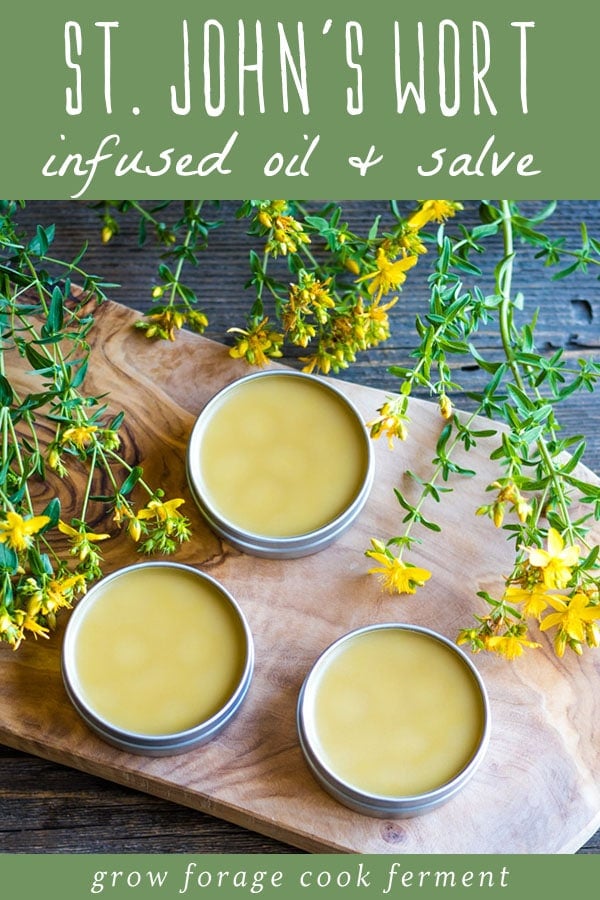
Want to save this post for later?
Wildcrafting Weeds
If you want to learn more about the edible and medicinal weeds that surround us and how to use them, check out my eBook: Wildcrafting Weeds: 20 Easy to Forage Edible and Medicinal Plants (that might be growing in your backyard)!
Foraging for St. John’s Wort
I love foraging for St. John’s wort, perhaps because it is generally pretty easy to find! I see it growing all summer long, from lower elevations up to mountain regions. Once you’ve identified it, you will probably start seeing it everywhere!
In most cases it is best to use St. John’s wort fresh (rather than dried) as it contains the most hypericin, which is the main medicinal component. Keep this in mind as you are harvesting and only take as much as you can use in a day or two.
Where to Find St. John’s Wort
St. John’s wort (Hypericum perforatum) can be found from late spring through summer. Often when it is dried up and past its prime in warmer climates you can still find it in cooler locations and higher elevations.
St. John’s wort is very common and grows nearly worldwide. It prefers dry and gravelly locations in full sun and is common in fields, pastures, along roadsides, and in disturbed areas.
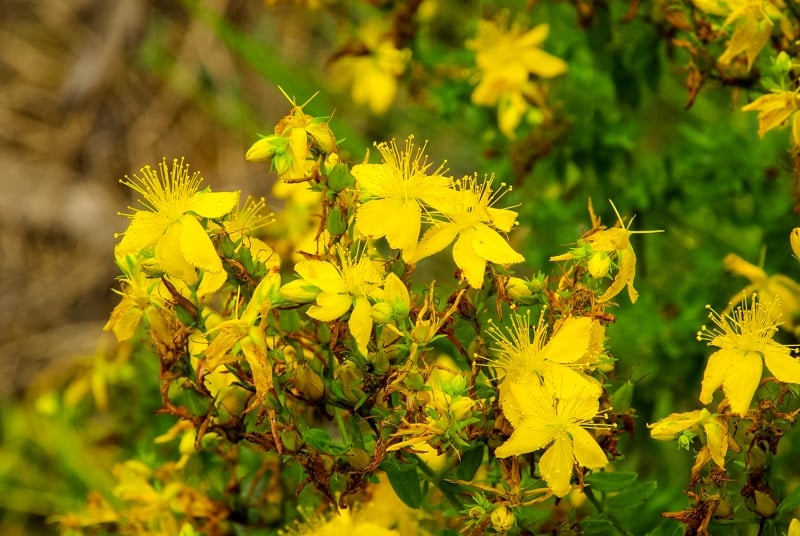
Identifying St. John’s Wort
St. John’s wort is an herbaceous perennial plant that can grow to be up to 3 feet in height, and the base of the plant is usually woody.
The flowers are small, yellow, and found in clusters at the end of the branches. They have five petals with tiny black dots along the margins, and many stamens.
The leaves are narrow, stalkless, opposite, and rounded with tiny transparent dots, and sometimes black dots on the underside. It is sometimes hard to see the transparent dots, but if you hold them up to the light you will see them.
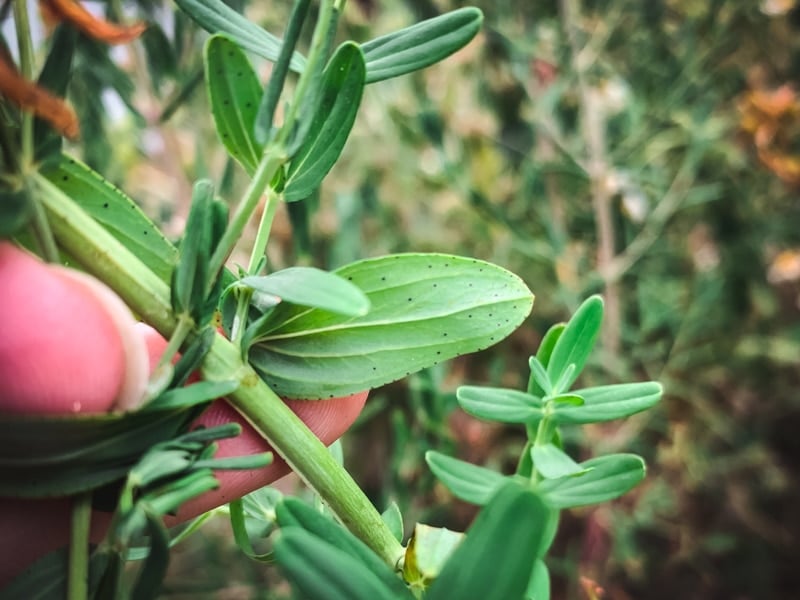
Harvesting St. John’s Wort
St. John’s wort is best harvested and used when it is in full bloom and still fresh, but it is ok if some of the flowers have dried a bit on the stalk. If you crush the flower buds between your fingers and see a red substance (that’s hypericin, the main medicinal constituent), then it is prime for harvesting.
To harvest, cut the top 2-3 inches of the plant to get some leaves, flowers, and buds, as they all have some benefits.
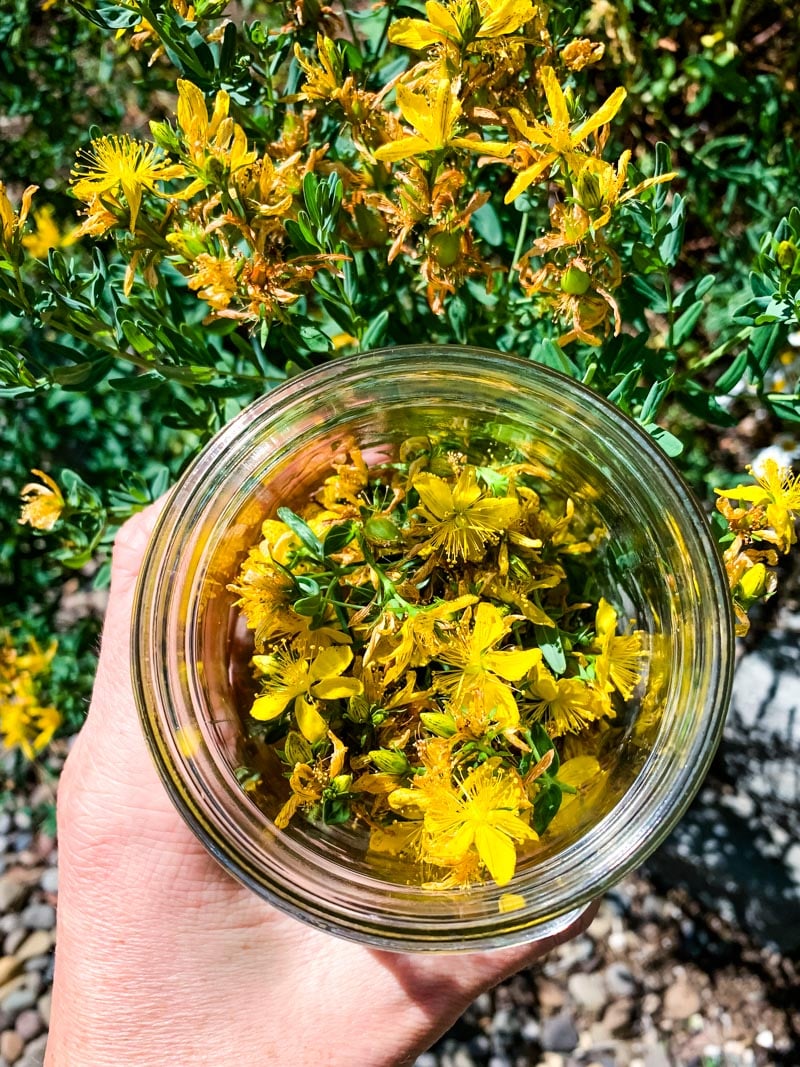
Because St. John’s wort often grows in locations that aren’t ideal for foraging (roadsides in particular), be sure to harvest in an area that is free of sprays and road runoff.
As with any plant you are foraging, don’t take more than you need or can use, and never more than 30% of a particular stand.
St. John’s Wort Look-alikes
St. John’s wort can sometimes be confused with tansy ragwort (Jacobaea vulgaris), which is also called St. James wort.
Tansy ragwort also likes to grow along roadsides and from a distance can look quite a bit like St. John’s wort, but once you see it up close there are some differences. Tansy ragwort has pinnately lobed leaves (sort of similar to dandelion leaves) and daisy-like flowers.
While tansy ragwort has some traditional uses in herbalism, it also has toxic compounds and should never be ingested.
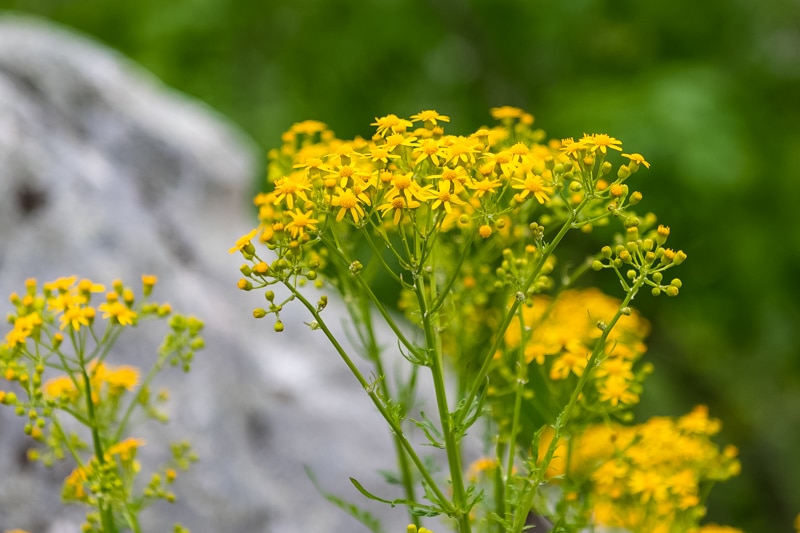
Uses and Benefits of St. John’s Wort
While St. John’s wort is technically edible, it is primarily used for medicinal purposes. It is a highly effective nervine and sedative herb with strong antidepressant properties.
St. John’s wort is anti-inflammatory and is very good for reducing pain, particularly nerve pain. It also has some antibacterial properties making it beneficial to use on minor cuts, scrapes, and wounds.
The best and most common ways to use St. John’s wort medicinally is to make an infused oil, salve, tincture, or tea. (See my recipe for infused oil and salve below).
It’s important to note that fresh St. John’s wort is much more effective than dried in medicinal applications and imparts a red coloration due to the hypericin content.
If you don’t have access to fresh you can use dried St. John’s wort from Mountain Rose Herbs. It won’t be quite as potent as fresh, but will still have some benefits.
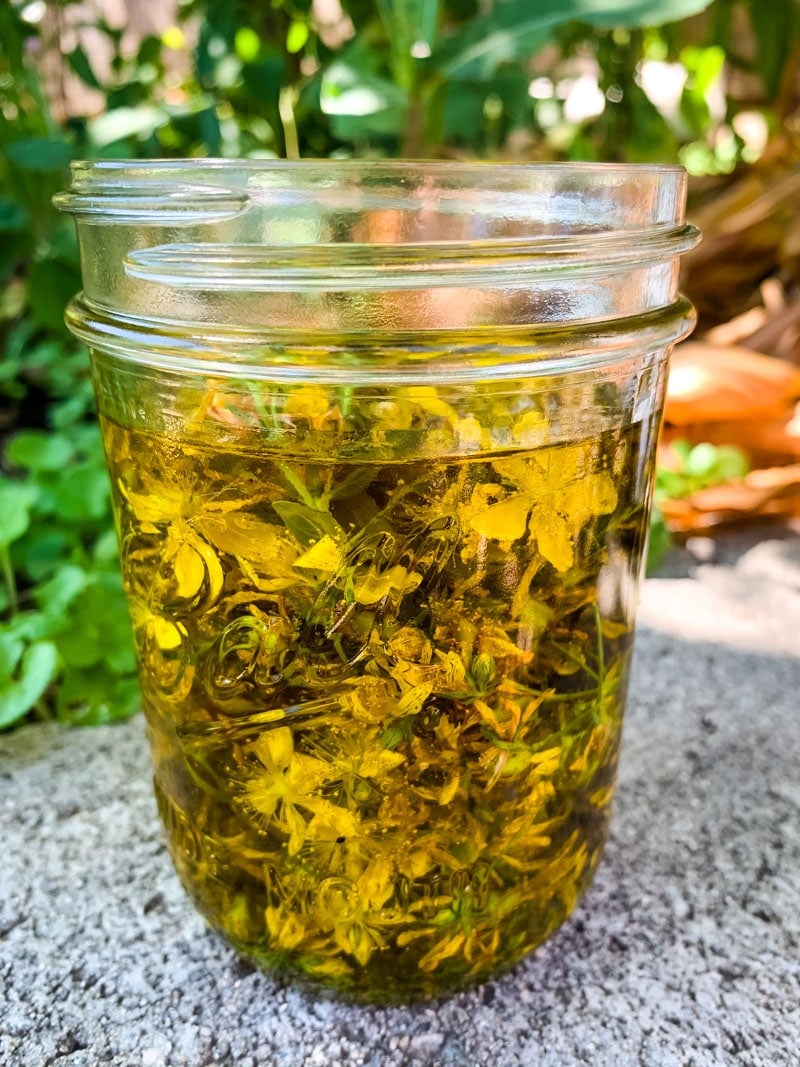
St. John’s Wort Considerations
Due to its powerful effects on depression, St. John’s wort should not be taken with prescription antidepressants.
If you are taking any medication please consult your doctor, naturopath, or a trained clinical herbalist before taking St. John’s wort.
When taking St. John’s wort internally, it is best to cycle 2-3 weeks on, then one week off to get the most benefit.
St. John’s Wort Oil & Salve Recipe
St. John’s wort has pain relieving and anti-inflammatory properties, so this infused oil and salve is wonderful to use on sore muscles or minor wounds and abrasions. It is also soothing for dry and itchy skin conditions. Fresh St. John’s wort flowers and buds will impart a beautiful deep red color to the infused oil.
Want more herbal salve recipes? Here are 10 salves for you to include in your natural skin care routine!
St. John’s Wort Infused Oil
After collecting fresh St. John’s wort tops, it’s helpful to let them wilt on a drying screen or towel for a few hours or overnight to release some of the moisture content before making the infused oil.
Put the wilted St. John’s wort tops in a pint jar, then cover them with olive oil, making sure that all of the plant material is submerged (add a little more oil if needed). Cover the jar with a lid and put in a cool and dark place to infuse for 1-2 weeks, then strain out the flowers with a fine mesh sieve lined with cheesecloth. Squeeze out as much of the oil from the plant material as possible.
Because fresh plant material is used (just like in my dandelion oil and salve and yarrow salve), this infused oil should be used up within a month or two to prevent spoilage and rancidity.
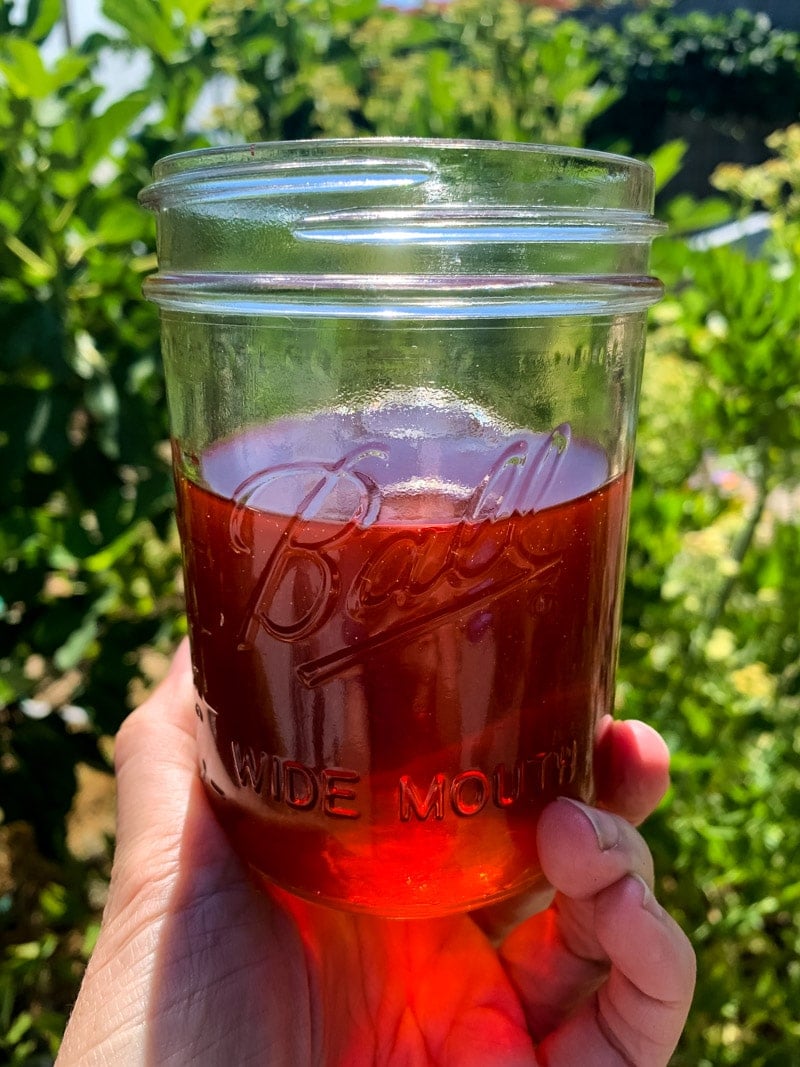
St. John’s Wort Salve
To make the salve, create a makeshift double boiler by putting a small bowl or a glass Pyrex measuring cup over a pot with about an inch of simmering water.
Put the St. John’s wort oil and beeswax into the small bowl or Pyrex measuring cup, and heat until the beeswax completely dissolves into the oil, stirring occasionally. Carefully pour the mixture into small jars or tins and let sit until the salve sets up completely.
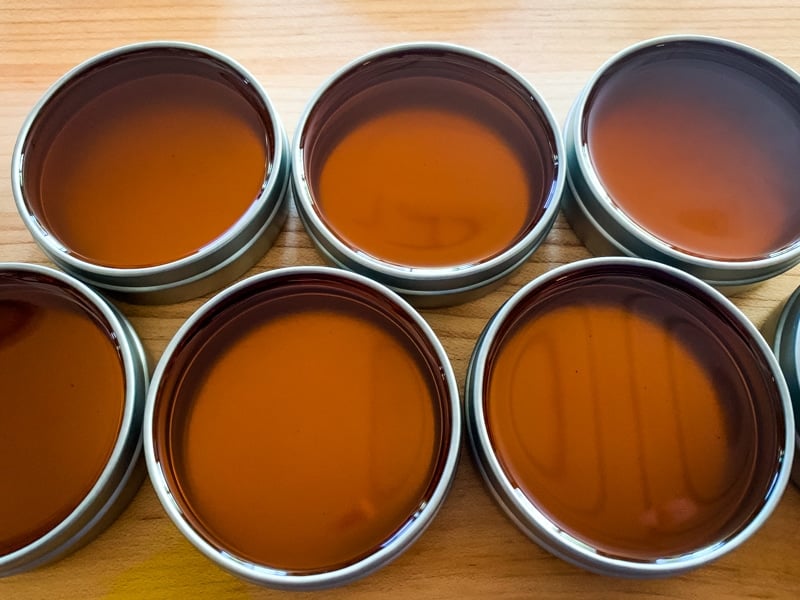
Use this salve on sore or aching muscles, joints, or areas where there is nerve pain. It can also be used on minor wounds, scrapes, scratches, and dry and itchy skin conditions.
For more information on herbal salves and how to make them, see my post on How to Make an Herbal Salve.
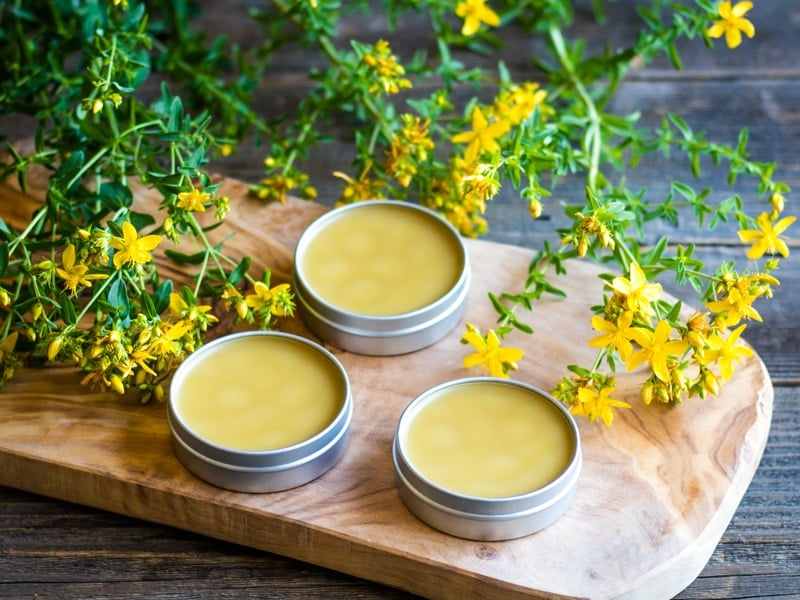
Want more herbal salve recipes?
- Plantain Salve
- Calendula Salve
- Comfrey Salve
- Diaper Rash Salve
- Lavender Salve
- Dandelion Salve
- Pine Salve
- Chickweed Salve
- Yarrow Salve
- Plantain Salve
St. John’s Wort Oil & Salve
Ingredients
For the Infused Oil
- 1 cup fresh St. John's wort tops flowers, buds, and leaves
- 1 cup olive oil
For the Salve
- 1 cup St. John's wort infused oil
- 1 ounce beeswax
Instructions
For the Infused Oil
- Put the wilted St. John’s wort tops in a pint jar, then cover them with the olive oil, making sure that all of the plant material is submerged (add a little more oil if needed).
- Cover the jar with a lid and put in a cool and dark place to infuse for 1-2 weeks, then strain out the flowers with a fine mesh sieve lined with cheesecloth. Squeeze out as much of the oil from the plant material as possible. The oil will be a dark red color.
- Because fresh plant material is used, this infused oil should be used up within a month or two to prevent spoilage and rancidity.
For the Salve
- Create a makeshift double boiler by putting a small bowl or a glass Pyrex measuring cup over a pot with about an inch of simmering water.
- Put the St. John’s wort oil and beeswax into the small bowl or Pyrex, and heat until the beeswax completely dissolves into the oil, stirring occasionally.
- Carefully pour the mixture into small jars or tins and let sit until the salve sets up completely.
Notes
- Use this salve on sore or aching muscles, joints, or areas where there is nerve pain. It can also be used on minor wounds, scrapes, scratches, and dry and itchy skin conditions.
- For more information on herbal salves and how to make them, see my post on How to Make an Herbal Salve.

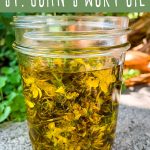


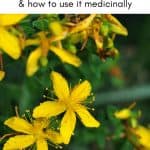
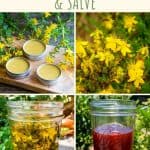
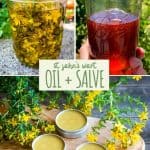

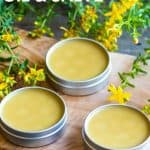
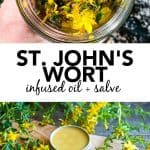

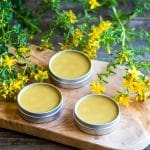

Can the salve have a longer life if put in refrigerator?
Yup!
I picked fresh St Johns wort and started a tincture, but it didn’t turn red its clear.
Will that still have all the medicinal property’s for the tinture?
Hi Nancy. Did you dry the flowers first?
When I moved into my home there was a St. John’s Wort plant. It had a tag on it and I’m sure they purchased it from a local nursery. The bees love the flowers. Would this plant be medicinal as well? I would live to use it if I could.
Hi Kelly. Yes, you can use it medicinally.
Can I use the red and black berries to make a salve?
What is the shelf life of the salve?
Homemade salves will last 12+ months in a cool, dark place. Even longer refrigerated.
When you say not to be taken with antidepressants, is that specifically just internal use or external as well?
If you make a few salves. Could you freeze extras til needed?
Sure!
Can I use dried St johns wort to make oil too? Would it work the same or should I leave it in sunlight as when making marigold oil?
Hi there. It’s only advised to use fresh St. John’s wort for infused oils due to beneficial active constituents that are no longer abundant in the dried plant parts.
Macerate is always made from dried herbs, with the exception of St. John’s wort. Dried St. John’s wort oil will not be red.
Hi Colleen,
I was just wondering if one wanted to extend the shelf like of the st.johns wort oil, what could you add to it?
regards,
Anita
The salve alone will have a much longer shelf life. You can add a touch of some rosemary oil or vitamin E oil (+/- 1% of total) to extend the shelf life of the salve even more. Any antioxidant oil will slow the process of a deterioration.
I’m not certain those additions would have the same effect in the oil not processed into salve.
Also, a sterile work environment and sterile containers will go a long way in the hope for longer shelf life.
Cheers!
Can you use the berries on St Johns wort?
Does the salve last longer than the oil ?
I have St. John’s Wort steeping in olive oil from last summer. Same with my Arnica and olive oil. I just never got around to it! Eek! Do you think its any good?
My St. John’s wort is past is flowering stage and little reddish-orange seed pods are all that are left. Can anything be done with those?
Hi. Thanks for your info. I’m looking to buy salve and oil. Do you grow the herb? Thanks
Would st. Johns wort be effective as a tincture? If so, would this be used for mood or pain, or both? Thanks!